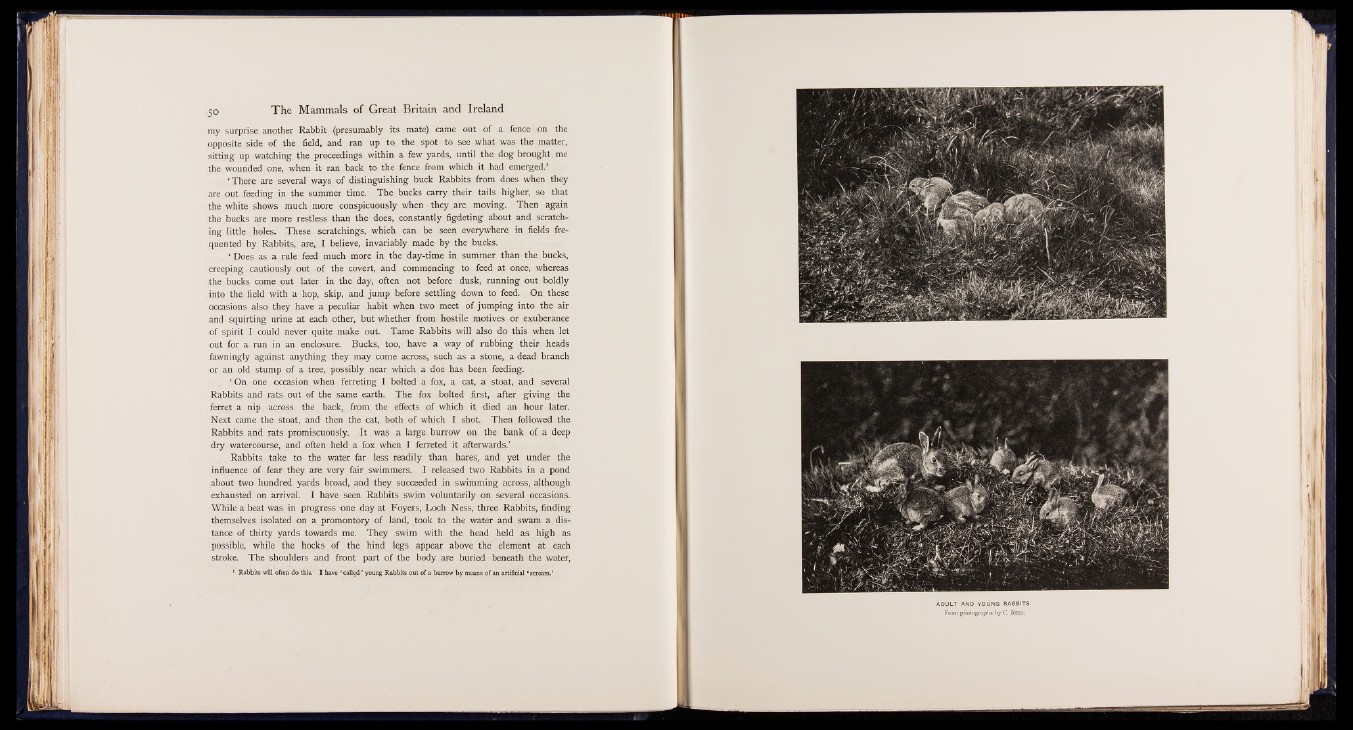
The Mammals of Great 50 Britain and Ireland
my surprise another Rabbit (presumably its mate) came out of a fence on the
opposite side of the field, and ran up to the spot to see what was the matter,
sitting up watching the proceedings within a few yards, until the dog brought , me
the wounded one, when it ran back to the fence from which it had emerged.1
‘ There are several ways of distinguishing buck Rabbits from does when they
are out feeding in the summer time. The bucks carry, their- tails higher, so that
the white shows much more conspicuously when they are moving. Then again
the bucks are more restless than the does, constantly figdeting about and scratching
little holes. These scratchings, which can be seen everywhere in fields frequented
by Rabbits, are, I believe, invariably made by the bucks.
‘ Does as a rule feed much more in the day-time in summer than the bucks,
creeping cautiously out of the covert, and commencing to feed at once, whereas
the bucks come out later in the day, often not before dusk, running out boldly
into the field with a hop, skip, and jump before settling down to feed. On these
occasions also they have a peculiar habit when two meet of jumping into the air
and squirting urine at each other, but whether from hostile motives or exuberance
of spirit I could never quite make out. Tame Rabbits will also do this when let
out for a run in an enclosure. Bucks, too, have a way of rubbing their heads
fawningly against anything they may come across, such as a stone, a dead branch
or an old stump of a tree, possibly near which a doe has been feeding.
‘ On one occasion when ferreting I bolted a fox, a cat, a stoat, and several
Rabbits and rats out of the sarne earth. The fox bolted first, after giving the
ferret a nip across the back, from the effects of which. it died an hour later.
Next came the stoat, and then the cat, both of which I shot. Then followed the
Rabbits and rats promiscuously. It was a large burrow on the bank of a deep
dry watercourse, and often held a fox when I ferreted it afterwards.’
Rabbits take to the water far less readily than hares, and yet under the
influence of fear they are. very fair swimmers. I released two Rabbits in a pond
about two hundred yards broad, and they succeeded in swimming across, although
exhausted on arrival. I have seen Rabbits swim voluntarily on several occasions.
While a beat was in progress one day at Foyers, Loch Ness, three Rabbits, finding
themselves isolated on a promontory of land, took to the water and swam a distance
of thirty yards towards me. They swim with the head held as high as
possible, while the hocks of the hind legs appear above the element at each
stroke. The shoulders and front part of the body are buried beneath the water,
1 Rabbits will often do this. I have ‘ called ’ young Rabbits out of a burrow by means of an artificial ‘ scream.’